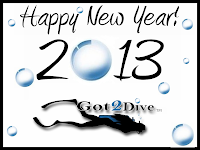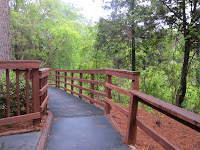Got2Dive and Canoe Weeki Wachee River
Hydrotherapy at Hospital Hole


 SCUBA Plan
SCUBA Plan
Our plan was to combine some canoeing on the Weeki Wachee River with a dive to explore Hospital Hole. This deep sinkhole, which is also known as Fish Hospital, is located in a wide bend in the river. The story behind the site’s name comes from early settlers, who thought that sick fish came upriver to this location to recuperate and be restored to health by the healing river waters before returning to the sea.
With lots of sunshine and a high of 73 degrees expected, we packed up the canoe and headed west on Route 50 to Weeki Wachee, then on past the intersection of Highway 19 towards Bayport, and left on Country Road 597. We met up with our dive buddy and surface supporter Felicia, and launched our canoe from Roger’s Park, which is located about four miles from the river’s headspring.
A short paddle around a couple of windy river bends brought us to Hospital Hole. The crystal-clear, 74-degree water made it easy to locate the edges of this submerged sinkhole, and we could see schools of fish and manatees bathing in the supposedly therapeutic depths.
The Dive
With excitement and eagerness, we geared up and made sure our trusty surface supporter Felicia was ready, and our dive flag in place. As soon as we started our dive, we were greeted by several manatees at the entrance to the hole. Like us, they seemed to be joying their liquid therapy.
entrance to the hole. Like us, they seemed to be joying their liquid therapy.We also saw several momma manatees cuddling and nursing their babies. As we continued downward, we could feel the changes in the water temperature known as a thermocline. At a depth of 30 feet we saw a manatee peacefully sleeping on a silty ledge. The hole is reported to be 140 feet deep, but our dive plan called for a max depth of 60 feet to avoid a dark, smelly sulfur layer. There’s no marine life below the sulfur, and the murky depths don’t make for good video.
We spent our dive exploring the limestone ledges and walls, some of which are covered with amusing graffiti, and we noticed several solution tubes along the walls. One was large enough to poke my head and shoulders up in to see the beautiful sunlight filter in from above.
The water didn't have the crystal clarity of a spring basin, but it was refreshing, and there was a lot of life. The schooling fish added an extra element of enjoyment, but without a doubt, the best part of this dive was seeing all the manatees that congregate at this site.
Hospital Hole is a unique site because it has something for everyone in the family: SCUBA divers, snorkelers and swimmers can enjoy a plunge in the refreshing and some say healing waters of the Weeki Wachee River. And the best part is that it is open year round, never gets rough, and is free for anyone who has access to a boat, kayak or canoe. Stay wet my friends!






.jpg)



























